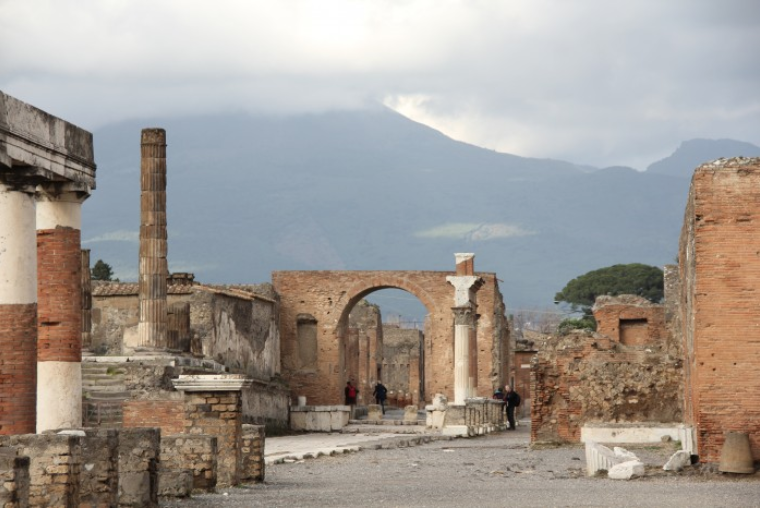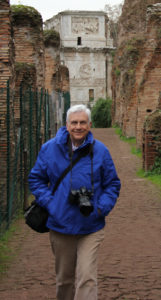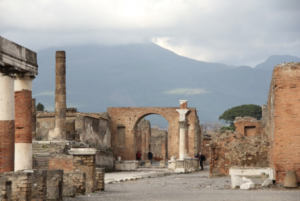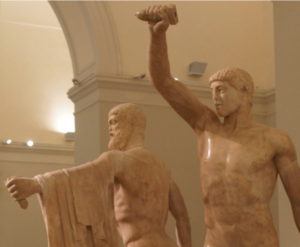Sign in for exclusive products and special discounts.

Education: It’s Not on the Test
by Dr. Thomas Milton Kemnitz
 This is such a great time to produce educational materials. With digital photography, printing, and delivery, it is possible to do so many more exciting things now than it ever was in the past.
This is such a great time to produce educational materials. With digital photography, printing, and delivery, it is possible to do so many more exciting things now than it ever was in the past.
I was struck by the enhanced possibilities that technological change has fostered when I came to write the Greek history and culture parts for The Word Within the Word I. It had started when I was in the British Museum in London in the special room devoted to the Parthenon. More than two centuries ago, Lord Elgin and his agents stripped the Parthenon in Athens of its best remaining sculptures and friezes and shipped them to London. (I had looked at them repeatedly years before when I was writing my doctoral dissertation, which had nothing to do with them; it was just that they were so stunningly beautiful and were in the same building where I was working, and no other break was as good as spending a few minutes there.) It occurred to me in 2010 that we were missing an opportunity in our vocabulary books; we could give students a chance to experience the Elgin Marbles and the Parthenon by simply adding pages about them to the text. The texts are about the Latin and Greek roots of academic English, so the Parthenon is related at least a little.
In the old days, this would have taken intricate planning and a huge investment in camera, film, film processing, and scanners, and we would have been limited by the complexity of getting images on film. But now all it takes is a professional digital camera and lens and some storage media. I took thousands of photos in London, then went to Athens and took thousands more.
And the extent of the project began to expand with the number of photos, which fired my imagination. It would be the Parthenon in the context of Athens of the fifth century B.C.E. Well, then it would have to include the Persians and the Spartans. No, wait—that was not enough. We talk about ancient Greece and Rome all in one breath as though they were the same, but students never get a sense of how they were different and how they were related. So first we needed to explain Greece and the relations between the Athenians, the Persians, the other Greeks, including the Spartans, and Macedonia and Alexander the Great. Then we could explain Rome and how the Romans were related to the Greeks.
 First it was going to fit into one volume of The Word Within the Word, then in two, and finally in three. I traveled to London, Hadrian’s Wall in the North, York, Bath, Fishbourne in the Sussex countryside, Paris and the Louvre, Rome, Herculaneum, Pompeii, Naples, Tivoli, Ostia, Athens, Delphi, and many other places to get photos as the project continued to expand in my imagination.
First it was going to fit into one volume of The Word Within the Word, then in two, and finally in three. I traveled to London, Hadrian’s Wall in the North, York, Bath, Fishbourne in the Sussex countryside, Paris and the Louvre, Rome, Herculaneum, Pompeii, Naples, Tivoli, Ostia, Athens, Delphi, and many other places to get photos as the project continued to expand in my imagination.
The first volume of The Word Within the Word is on less than two centuries of Greek history, and the Parthenon appears for a few pages in its context, which I hope is clearly established so that the students know how it fits in, why it was built, and why it is important. The volume has more than 100 photos, which enabled me to explain things on a much higher level than would have been the case without them. The material on Greece is college level, but middle school students are reading it and loving it. That is a direct result of the amount that the photographs allow me to communicate; it is certainly not a result of my prose.
 We can print all of those photos because advances in printing technology make it inexpensive now to add photos to texts. So the final books are the result of a double set of technological advances in photography and in printing.
We can print all of those photos because advances in printing technology make it inexpensive now to add photos to texts. So the final books are the result of a double set of technological advances in photography and in printing.
The exciting thing to me is how far we are able to extend learning for students who care to find out more. None of this will ever be on the test. Nothing that I have written about Greece or Rome will be on the test. That is not why it is there. It is intended to expand our children’s horizons so that they can make themselves more knowledgeable about things that interest them and so that they can be better educated about the civilizations that produced their world.
This is the huge educational opportunity that new technology is making possible: easy entrance into the ancient world that is not on the test but that is so much a part of our Western civilization.
